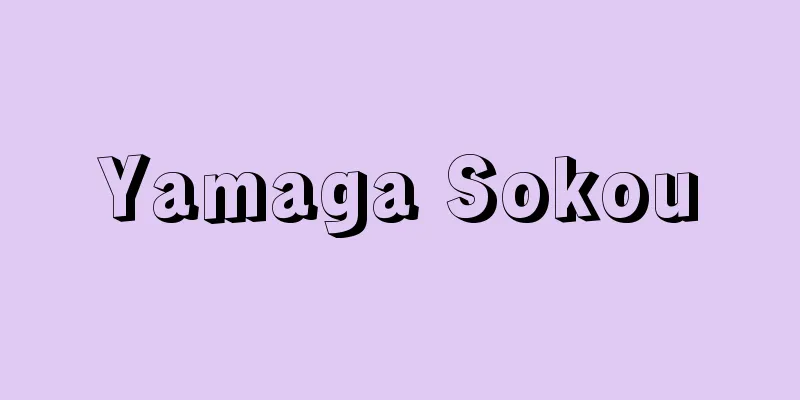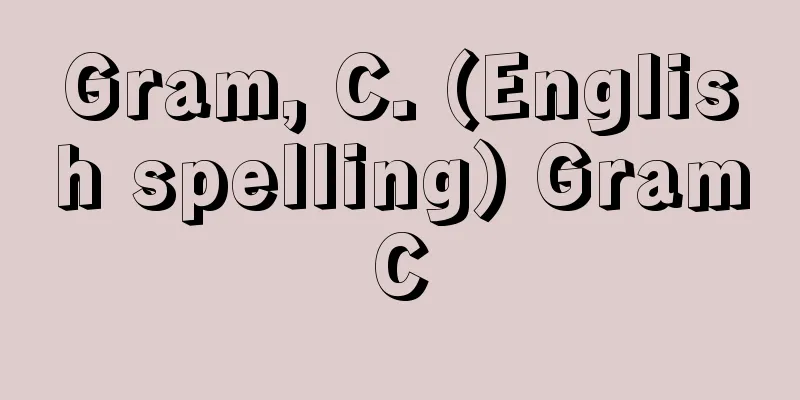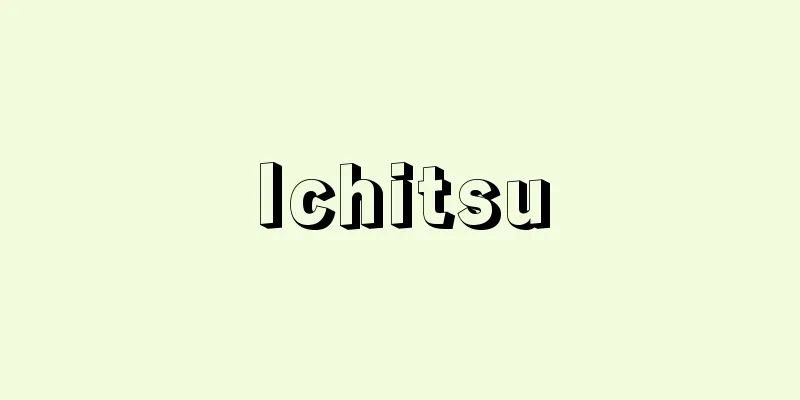Yamaga Sokou

|
A Confucian scholar and military scholar in the early Edo period. His given name was Takaoki, his pen name was Shikei, he was commonly known as Jingozaemon, and his pen name was Sogyo. He was born in Aizu-Wakamatsu on August 16, 8th year of the Genna era. He went to Edo, and in 1630 (Kan'ei 7) he became a disciple of Hayashi Razan, studying Confucianism, and military science under Obata Kagenori and Hojo Ujinaga. At a young age, he wrote "Shisho Genkai" and "Heiho Jinmu Yubishu" (1651), and further studied Shinto and Japanese studies, demonstrating his genius and earning fame. He was offered a position in the shogunate, but this did not come to fruition due to the death of Shogun Iemitsu. From 1652 (Shoo 1) to 1660 (Manji 3), he served Asano Naganao (1610-1672), lord of the Ako domain in Harima, who was also his disciple, and during this time he wrote his major work on military science, "Bukyo Zensho" (1656), among others. Since studying with the Hayashi family, he had been familiar with the exegesis of Neo-Confucianism, and later he was also attracted to Laozi and Zhuangzi, and Zen, and at times expressed a view that Confucianism, Buddhism, and Laozi were one and the same, but in "Shukyo Yoroku" (Essential Teachings), written at the age of 35, he took the position of Neo-Confucianism. However, the criticism of Neo-Confucianism against abstract speculation detached from everyday life and inner cultivation isolated from everyday life activities became clearer after that, and in the "Yamaga Gorui" (completed in 1665) compiled by his disciples, the archaic position that one should directly follow the teachings of ancient sages without using the books of the Han, Tang, Song, and Ming dynasties was expressed, and in the "Seikyou Yoroku" ("Seikyo Yoroku"), written in 1665 (Kanbun 5), which can be considered a summary of the "Seikyo" chapter of the "Gorui", the study of conduct after the turn from archaic learning was systematically developed. However, the "Seikyou Yoroku" was deemed an "indecent book" and in the following year, 1666, he was exiled to Ako in Harima by the shogunate, where he remained in exile until 1675 (Enpo 3). During this time, he wrote works such as "The Complete Compendium of Punctuation of the Four Books," which criticized Zhu Xi's "Collected Commentaries on the Four Books," "Facts of China and the Dynasty," which described the Age of the Gods and ancient times from the standpoint of Japanese nationalism, which considered Japan to be Chinese, and "Bukejiki," which could be called an encyclopedia of the samurai class. In 1675, when he was pardoned from exile, he wrote the famous autobiographical work "Zaisho Zanpitsu." After that, he devoted himself to lecturing and writing mainly on military science in Edo, and wrote works such as "Gengen Hakken Genkai," but he passed away on September 26, 1372, at his private residence, Sekitokudo, in Edo. He was 64 years old. His grave is currently located at Sosanji Temple in Shinjuku Ward, Tokyo. Well-known feudal lords among Sogyo's disciples and supporters included Asano Naganao, Tsugaru Nobumasa (1646-1710), lord of Hirosaki domain in Mutsu, Itakura Shigenori (1617-1673), lord of Karasuyama domain in Shimotsuke, Omura Suminaga (1636-1706), lord of Omura domain in Hizen, and Matsuura Shigenobu, lord of Hirado domain in the same year (Sogyo's younger brother Yoshiyuki served as his chief retainer, and later his grandson Takamichi descended to Hirado, and the family remains in that position to the present day. Hirado is home to the Yamaga Bunko, which has a collection of manuscripts that are designated Important Cultural Properties). [Tadashi Sakuma July 19, 2016] "The Complete Works of Yamaga Soko, 15 volumes (1940-1942, Iwanami Shoten)" ▽ "Japanese Thought Series 32: Yamaga Soko, annotated by Tahara Tsuguro and Morimoto Junichiro (1970, Iwanami Shoten)" ▽ "Yamaga Soko, by Hori Isao (1959/New edition, 1987, Yoshikawa Kobunkan)" ▽ "Yamaga Soko, by Sasaki Moritaro (1978, Meitoku Publishing)" ▽ "Yamaga Soko, by Yamaga Mitsuyo (1981, Hara Shobo/Republished, 1999, Kinseisha)" [References] | | | | Razan| | |Source: Shogakukan Encyclopedia Nipponica About Encyclopedia Nipponica Information | Legend |
|
江戸前期の儒者、兵学者。名は高興(たかおき)、字(あざな)は子敬(しけい)、通称は甚五左衛門、素行は号。元和(げんな)8年8月16日会津若松に生まれる。江戸に出、1630年(寛永7)林羅山(はやしらざん)に入門、儒学を学び、小幡景憲(おばたかげのり)、北条氏長(ほうじょううじなが)に兵学を学ぶ。若くして『四書諺解(げんかい)』『兵法神武雄備集』(1651)を著し、さらに神道(しんとう)・和学を修めるなど秀才ぶりを発揮し名声をあげた。幕府仕官の内意があったが、将軍家光(いえみつ)の死により実現しなかった。1652年(承応1)より1660年(万治3)まで、門人でもあった播磨(はりま)赤穂(あこう)藩主浅野長直(あさのながなお)(1610―1672)に仕え、この間兵学上の主著『武教全書』(1656)などを著す。林家入門以来朱子学の訓詁(くんこ)に親しんでおり、のち老荘や禅にもひかれ、儒仏老三教一致的な見解を述べたこともあるが、35歳の『修教要録』では朱子学の立場にたつ。 しかし朱子学の、日常から遊離した観念的な思弁と日常の生活行為と遮断された内面の修養に対する批判は、それ以後しだいに明確となり、門人たちが編纂(へんさん)した『山鹿語類』(1665成立)では、漢(かん)・唐(とう)・宋(そう)・明(みん)の書を媒介とせず直接古代の聖賢の教えにつくべきであるとする古学的立場が表明され、『語類』聖学篇(へん)の要約ともいえる1665年(寛文5)に著された『聖教要録』では、古学転回後の素行学が体系的に展開された。しかし『聖教要録』は「不届成(ふとどきなる)書物」とされ、翌1666年幕府によって播磨赤穂に流され、1675年(延宝3)許されるまで流謫(るたく)の身であった。その間、朱子の『四書集註(ちゅう)』を批判した『四書句読(ししょくとう)大全』、日本を中華とする日本主義の立場から神代・古代について述べた『中朝事実』、武家の百科全書ともいうべき『武家事紀』などを著し、配流から赦免された1675年には自伝的著作として有名な『配所残筆』を著した。その後江戸において主として兵学に関する講学・著述に努め、『原源発揮諺解』などを著したが、貞享(じょうきょう)2年9月26日江戸の私邸積徳堂に没した。享年64歳。その墓は現在、東京新宿区の宗参寺(そうさんじ)にある。 素行の門人・支持者のうち大名では、浅野長直をはじめ陸奥(むつ)弘前(ひろさき)藩主津軽信政(つがるのぶまさ)(1646―1710)、下野(しもつけ)烏山(からすやま)藩主板倉重矩(いたくらしげのり)(1617―1673)、肥前(ひぜん)大村藩主大村純長(おおむらすみなが)(1636―1706)、同平戸(ひらど)藩主松浦鎮信(まつらしげのぶ)(素行の弟義行(よしゆき)が家老として仕え、のち孫高道が平戸に下り、一族は現在に至っている。平戸には山鹿文庫があり重要文化財の稿本類を伝えている)らが知られている。 [佐久間正 2016年7月19日] 『『山鹿素行全集』全15巻(1940~1942・岩波書店)』▽『田原嗣郎・守本順一郎校注『日本思想大系32 山鹿素行』(1970・岩波書店)』▽『堀勇雄著『山鹿素行』(1959/新装版・1987・吉川弘文館)』▽『佐佐木杜太郎著『山鹿素行』(1978・明徳出版社)』▽『山鹿光世著『山鹿素行』(1981・原書房/再刊・1999・錦正社)』 [参照項目] | | | | | | |出典 小学館 日本大百科全書(ニッポニカ)日本大百科全書(ニッポニカ)について 情報 | 凡例 |
<<: Yamagata [town] - Yamagata
Recommend
Houkazo - Houkazo
Noh piece. Fourth piece. Five-school current piec...
Uruuru [Lake] - Uruuru
...It was formed when a freshwater lake with an a...
Maritain, Jacques
Born: November 18, 1882 in Paris [Died] April 28, ...
Isle of Man - Man
An island in the Irish Sea, halfway between Great ...
Bowstring hemp
...Leaf cuttings can also be used, but variegated...
Aves
...The oldest of this group is the Placodermi, wh...
Vajrapani Sutra - Kongouchogyo
A Buddhist scripture. Along with the Mahavairocan...
Toshiyuki Fujiwara
A poet of the early Heian period. Son of the insp...
RAPP - Rap
A literary organization in the Soviet Union. Its o...
茜选 - Itei
...The designs feature fine porcelain patterns. A...
Good harvest - Housaku
〘 noun 〙 A large harvest of agricultural products....
Allium virgunculae (English spelling) Allium virgunculae
… [Mitsuru Hotta]... *Some of the terminology tha...
Different shelf - Different
A shelf made of two staggered boards built into th...
Law of diminishing returns
A fundamental proposition in economics regarding ...
Smocking - Smocking (English spelling)
It is a technique that uses European embroidery t...









